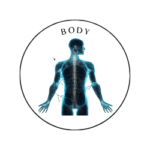 Mind
Mind
- Digital and Modern Well-being
- Mental Health and Emotional Well-being
- Mind-Body Connection and Holistic Health
- Parenting and Family
- Personal Growth and Development
- Relationships and Social Well-being
- Stress and Relaxation
- Therapeutic and Creative Practices
- Trauma and Recovery
- Work, Productivity, and Discipline
 Body
Body
 Fitness
Fitness
 Food
Food
 Beauty
Beauty
Anatomy of the Musculoskeletal System

Anatomy of the Musculoskeletal System: Structure and Function
The musculoskeletal system is a complex network that provides structure, support, and movement to the human body. Comprising bones, muscles, cartilage, tendons, and ligaments, this system plays a vital role in our overall health, mobility, and ability to perform everyday activities. Understanding the anatomy and function of the musculoskeletal system is crucial for maintaining its health and preventing injuries. This article will explore the key components of the musculoskeletal system, their functions, and how they work together to facilitate movement and support the body.
Key Components of the Musculoskeletal System
1. Bones
Bones are the rigid structures that form the skeleton. They serve multiple functions, including:
- Support: Bones provide a framework that supports the body’s shape and protects vital organs.
- Movement: Bones act as levers, allowing muscles to generate movement when they contract.
- Blood Cell Production: The bone marrow within certain bones produces red blood cells, white blood cells, and platelets, which are essential for transporting oxygen, fighting infections, and clotting blood.
- Mineral Storage: Bones store essential minerals, such as calcium and phosphorus, which are necessary for various bodily functions.
Types of Bones: There are four primary types of bones in the human body:
- Long Bones: Found in the arms and legs (e.g., femur, humerus), these bones are longer than they are wide and facilitate movement.
- Short Bones: These bones (e.g., carpals in the wrist) are roughly cube-shaped and provide stability and support.
- Flat Bones: Found in areas such as the skull and rib cage, flat bones protect vital organs and provide surfaces for muscle attachment.
- Irregular Bones: These bones (e.g., vertebrae) have complex shapes that fulfill specific functions in the body.
2. Muscles
Muscles are soft tissues that contract to produce movement. There are three types of muscles in the human body:
- Skeletal Muscle: These muscles are under voluntary control and are attached to bones by tendons. They enable voluntary movements, such as walking, running, and lifting objects. Skeletal muscles are striated and multi-nucleated.
- Smooth Muscle: Involuntary muscles found in the walls of internal organs (e.g., stomach, intestines), smooth muscles control movements such as digestion and blood vessel constriction. They are non-striated and have a single nucleus.
- Cardiac Muscle: This involuntary muscle is found only in the heart. It is responsible for pumping blood throughout the body and is striated with intercalated discs that facilitate coordinated contractions.
3. Cartilage
Cartilage is a flexible connective tissue found in various parts of the body, including joints, ears, nose, and between vertebrae. Its functions include:
- Cushioning: Cartilage absorbs shock and reduces friction between bones at joints.
- Support: Provides structure and shape to certain body parts, such as the nose and ears.
- Growth: Cartilage plays a crucial role in the growth and development of long bones during childhood and adolescence.
4. Tendons
Tendons are strong, fibrous connective tissues that connect muscles to bones. They transmit the force generated by muscles to the bones, facilitating movement. Tendons are made up of densely packed collagen fibers, making them resilient and able to withstand tensile forces.
5. Ligaments
Ligaments are fibrous connective tissues that connect bones to other bones at joints. They provide stability and support to joints, helping to prevent excessive movements that could lead to injuries. Like tendons, ligaments are also composed of collagen fibers, but they are slightly more elastic, allowing for some degree of flexibility.
Joints: The Connections
Joints are the areas where two or more bones meet, allowing for movement and flexibility. They can be classified into three main categories based on their structure and function:
1. Fibrous Joints
These joints are held together by dense connective tissue and allow minimal or no movement. Examples include the sutures in the skull.
2. Cartilaginous Joints
These joints are connected by cartilage and allow for limited movement. Examples include the intervertebral joints between the vertebrae and the pubic symphysis.
3. Synovial Joints
These are the most common and movable joints in the body. They are characterized by a fluid-filled joint cavity that allows for a wide range of motion. Synovial joints include:
- Hinge Joints: Allow for flexion and extension (e.g., elbow, knee).
- Ball-and-Socket Joints: Allow for rotational movement in multiple directions (e.g., shoulder, hip).
- Pivot Joints: Allow for rotational movement around a single axis (e.g., atlantoaxial joint in the neck).
- Gliding Joints: Allow for sliding movements between flat surfaces (e.g., wrists and ankles).
The Role of the Musculoskeletal System in Movement
The musculoskeletal system works in concert to facilitate movement through a process known as the muscle contraction cycle:
- Nerve Impulse: When the brain sends a signal through the nervous system, it triggers the contraction of the skeletal muscles.
- Muscle Contraction: Muscle fibers shorten and generate tension, pulling on tendons.
- Movement of Bones: The tension in tendons pulls on the bones, creating movement at the joints.
- Coordination: Multiple muscles work together to produce smooth and coordinated movements.
Maintaining a Healthy Musculoskeletal System
To ensure the health and functionality of the musculoskeletal system, individuals should consider the following practices:
- Regular Exercise: Engaging in strength training, flexibility exercises, and aerobic activities helps maintain muscle mass, bone density, and joint flexibility.
- Balanced Nutrition: Consuming a diet rich in calcium, vitamin D, and protein supports bone and muscle health.
- Proper Posture: Maintaining good posture during daily activities helps reduce strain on muscles and joints, preventing injuries.
- Injury Prevention: Using appropriate techniques during physical activities and allowing adequate rest and recovery can minimize the risk of injuries.
Conclusion
The musculoskeletal system is a remarkable and intricate network that provides support, mobility, and protection to the human body. By understanding its anatomy and function, we can appreciate the importance of maintaining a healthy musculoskeletal system throughout our lives. Engaging in regular physical activity, consuming a balanced diet, and practicing good body mechanics are essential strategies for promoting musculoskeletal health and ensuring our bodies remain strong and functional as we age.
